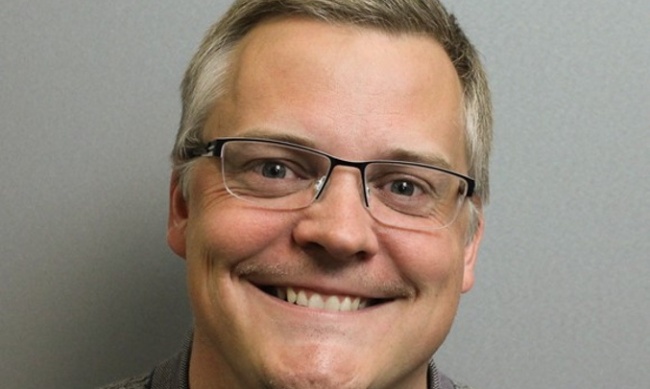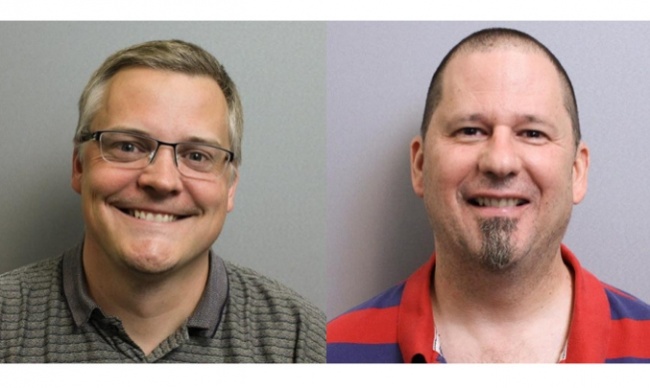Earlier this fall, we visited the Roseville, Minnesota headquarters of game giant Asmodee North America and conducted a series of interviews with Asmodee North America CEO Christian Petersen and Asmodee CMO Steve Horvath. In this interview on ANA’s changes to its distribution policies and network earlier this year we talk about ANA’s move to a Minimum Advertised Price Policy, how it’s handling the mass retail channel, and its vision for game distribution.
For the rest of our interviews with Asmodee execs
ICv2 Interview: Asmodee Execs on the State of the Market, Part 1
ICv2 Interview: Asmodee Execs on the State of the Market, Part 2
ICv2 Interview: Asmodee Execs on the ANA Consolidation, Part 1
ICv2 Interview: Asmodee Execs on the ANA Consolidation, Part 2
ICv2 Interview: Asmodee Execs on Diversity in Hobby Games
Recently you changed how you regulate online sales and went to a MAP [Minimum Advertised Price] policy (see "Asmodee North America Moves to MAP"). Can you talk about that change and why you made it?
Christian Petersen: Prior to making our policy change [regulating online sales] back in 2016, there were a lot of messy situations regarding who was selling our product, who was having access to our product, who was selling it where, counterfeits, etc. A lot of sellers that weren't professionals were opening accounts with distributors and selling via FBA [Fulfillment by Amazon] or eBay or whatever.
It's our job to get our games to players. To do that, we have to have intermediaries that are effective and motivated. If we start having certain channels destroy other channels, then we're just robbing Peter to pay Paul. In the long run, by not treating all intermediary market channels fairly, we’re not serving players.
Steve Horvath: In fact, we’d be degrading the market. As Chris mentioned earlier, the hobby game channel, those stores, are the lifeblood of creating new gamers. That online landscape of 2015 and 2016 was degrading that and making it next to impossible for most stores to compete against what was happening. It was the Wild West, and so something had to be done.
Petersen: In the short term, Asmodee would have been better off doing nothing. We would have been much better off by going for volume and just filling that marketplace up with lots and lots of product, but we saw a dark end to that road. We decided not to take those sales and profits in the short term, and to actually clean up our marketplace and make sure that the people that were selling our products had a chance to be successful with the rules that we set for the different channels.
Since January 2016, we authorized about 4,000 non-mass retail accounts (or something like that number) across the country. We authorized a number of online stores, as well — I believe that we had roughly 10 or 12 significant online hobby stores authorized.
As we were learning from this experience, we took a lot of feedback from retailers (both online and physical) on what was working for them, what was not working for them. We learned that retailers were both happy and unhappy. One of the concerns they had is that they were a lot less willing to stock up new product because on the back end they had more risk if they couldn't offload product that wasn't working for them locally, and they couldn't offload it regionally, or even nationally online. That made them less likely to actually take stock-risk on those new products. Given an environment that has so many new products coming out weekly, we wanted to create open roads for them, not block them off.
We looked pretty carefully at our policies in early Spring 2017. By then, we'd established a system by which we were authorizing retail accounts weekly and we'd worked many of the kinks out of the system. So, we decided we were more comfortable at that point with implementing a MAP policy and allowing brick-and-mortar hobby retailers to sell online, so we opened up those gates. Now with our Alliance relationship, we can really understand what kind of business our retail partners are in, what products they’re doing well with, and where our games are selling.
How are you enforcing MAP? Are you using third parties to monitor who's selling your products at what price? Are you doing that yourself?
Christian: We're still in early days. Our new policy didn't take place until August 1, so we're just slightly less than two months into it. We do have a team here that are monitoring and enforcing our MAP, being our marketplace moderation team. If you ask me again next year, I’ll have some more meat on that bone to talk about.
On your new sales policies, where do mass retailers fall? Do they fall under one of the account types you've got on your website? Where do they fall in terms of MAP, access to your full line of products, and time of release, specifically?
Petersen: What you see on our site is for independent retailers, which we define as somebody who has 10 stores or less. Once you get above that, you go into a different set of policies. We are going to be enforcing our MAP policy throughout -- chains, mass, everywhere.
Of course, it gets more tricky once you get into retailers that have jurisdictions across many states, and where laws vary. It's something that we're engaging with how to enforce now.
What about access to your full line and time of release for mass channels? Where do they fall in terms of your policies?
Petersen: The mass channels generally do not take new releases.
They don't "take," but would you sell them to them if they wanted everything?
Petersen: We will make special arrangement with mass retailers, including a limited number of exclusives, if we feel certain products can be strong for their audience, and will help grow the number of players. What we do try to do, and what we did with the Destiny Two Player Game, is that we were going to put up a monstrous fight to try to get our flagship hobby retailers those products, at least special games, at the same time as the mass retailer, where possible.
Horvath: The only Destiny product that's gone to Target was that two-player game, because we know the importance of the hobby retailer.
Petersen: From time to time, there may be a product that we'll give a mass market account exclusively for a period of time. There are other products that we will not give to the mass.
Are you doing any Target exclusives or Barnes & Noble exclusives?
Petersen: We do relatively few. We do them if we think there's a really good strategic reason.
What chain exclusives are out there now?
Horvath: Ticket to Ride: First Journey.
Is that Target?
Horvath: That's with Target, yes.
Petersen: And also the easier-to-learn version of the Captain Sonar game with Target.
Horvath: It's a pared down version for up to four players, instead of eight. It's a more accessible version.
ANA obviously made a big change in its hobby distribution that could have significant effects on the overall distribution network (see "Asmodee North America Goes Exclusive with Alliance"). What's your vision for what that distribution network for hobby games looks like five years from now?
Petersen: Cloudy in the future. There have been so many changes, not just the changes we've made. There have been a lot of changes in A, how many products are released and going through distributors, B, the store profile mix that distributors were servicing, and C, disrupters like Kickstarter, digital conversions, etc.
Historically, distributors served brick-and-mortar retailers. They acted as their storeroom and product consultants. What we saw in the last 5 to 10 years is that distribution became primarily driven by selling large volume to a few large sources, primarily online discounters of various kinds, and have become a lot less interested in helping facilitate growth on the local store level. Let’s go back to your original question.
How do you see the distribution network in five years?
Horvath: That's really hard to answer.
What do you want it to look like? You made decisions that are changing it, so you must be headed somewhere. Where are you headed?
Petersen: Ultimately, we have to try to make decisions that we think are going to affect us positively and affect specialty retail positively. To us, it's less of an issue with how many distributors there are as it is how many retailers there are and are they successful and thriving and do they have access to product in a reasonable, inexpensive way.
With the advent of all this online selling and the overall growth in the game market (a lot more people are playing games, have gone into the category in the last 5, 10 years than maybe ever before), we have ended up with a lot of distribution warehouses in the U.S. I’m not sure exactly how many, but I think it's going to be somewhere between 22 and 30 warehouses all over the country. It's too many. It's not really realistic there could be that many. We will likely see that number fall to something that is more effective on many levels.
Again, what Asmodee is trying to do is to find a way to have a much closer connection and communication with the individual store, understand their data, understand their inputs and try to figure out how we can help them grow their regional market, our national market and what data-driven correlations there would be for new products that each retailer could carry successfully.
Horvath: Or just better, clearer information to make their decisions on.
Petersen: What we decided to do with Alliance was much less "appoint Alliance as a single exclusive distributor" as it is a partnership in the vein of what Marvel and DC did with Diamond back in the day. Alliance is effectively allowing Asmodee to go direct to the hobby games market. We're saying we're going to be a partner together in this and we're not going to simply have a transactional relationship where you buy some stuff and then you push it to somebody and maybe you'll sell it or not. We are really engaging together with Alliance to better communicate with the market.
A couple of blocks from here, we have a room full of 11-12 (and growing) Alliance specialists that are focusing exclusively on our lines and are calling up hundreds of stores daily, talking to them about how we can help them grow and be more successful.

MAP, Mass Retail, Asmodee's Vision for Game Distribution
Posted by ICv2 on December 12, 2017 @ 3:37 am CT



